Introduction
Navigating the complexities of Pervasive Developmental Disorders (PDD) can be a daunting journey for parents and caregivers. These neurodevelopmental conditions, which encompass a range of challenges affecting socialization and communication, demand a keen understanding and proactive approach to ensure the well-being of affected children. With approximately 1 in 68 children diagnosed with a form of PDD, awareness and early recognition are paramount.
This article delves into the critical aspects of PDD, from defining the disorder and recognizing its symptoms to understanding the diagnostic process and the underlying causes. By equipping themselves with knowledge and resources, parents can effectively advocate for their children, paving the way for better outcomes and fostering a supportive community where families can thrive together.
Defining Pervasive Developmental Disorder (PDD)
Pervasive Developmental Disorder (PDD) encompasses a range of neurodevelopmental conditions that significantly impact socialization and communication abilities in youngsters. Understanding these disorders is essential for parents and caregivers, as it enables them to identify and address their offspring's unique challenges effectively. Research indicates that early intervention can lead to better outcomes, underscoring the importance of recognizing symptoms early in a young person's development. A recent national study revealed that a substantial percentage of individuals with developmental coordination disorder (DCD) were not only diagnosed but also faced co-occurring challenges, such as anxiety and speech-language disorders, which can further complicate their social interactions. The research emphasized that 91.6% of guardians found the diagnosis beneficial, yet many were previously unaware of their offspring's condition. This lack of understanding can create barriers to accessing essential assistance services. Parents often report feelings of frustration regarding the fragmented nature of available services, which are provided by various agencies, schools, and clinics. As they navigate this complex landscape, having a solid grasp of PDF enables caregivers to advocate more effectively for their offspring, ensuring they receive the therapies and resources required. Moreover, with digital support tools emerging as a promising avenue for enhancing access to information and services, families can better connect with vital resources and community support. By promoting awareness and understanding of PDD, guardians and caregivers can play a crucial role in advocating for their dependents' needs, ultimately leading to enhanced social and emotional health outcomes.
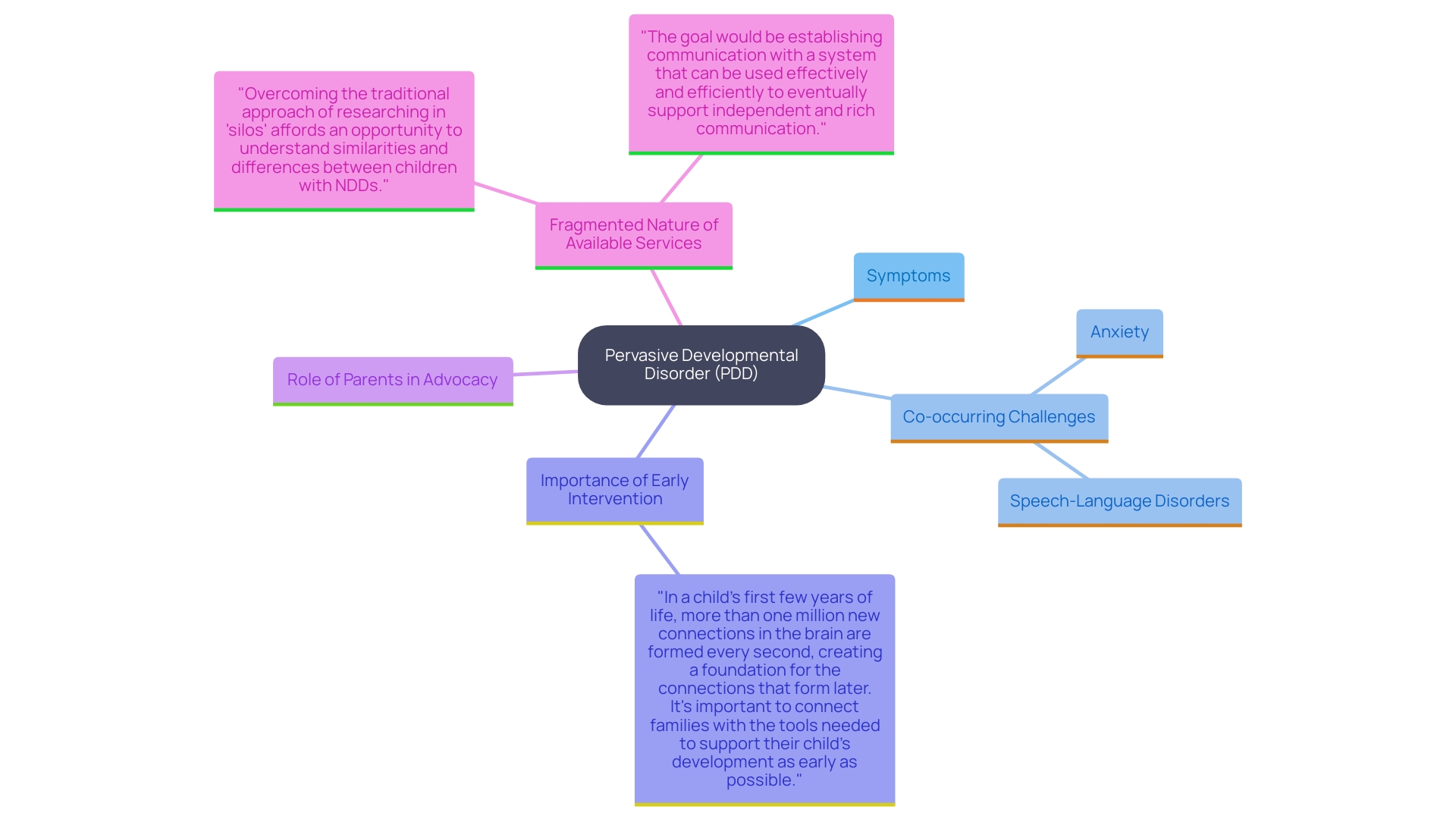
Prevalence and Incidence of Pervasive Developmental Disorder
Pervasive Developmental Disorders (PDD) significantly impact a large number of children, with research revealing that approximately 1 in 68 children are diagnosed with a form of PDD, including Autism Spectrum Disorder (ASD). This statistic highlights the significance of awareness for guardians and caregivers, as it helps to normalize the experiences they encounter, assuring them that they are not alone on this journey. Understanding the prevalence of these conditions can empower families to forge connections with others facing similar challenges, fostering a sense of community and support.
The process of diagnosing ASD typically relies on two primary sources of information: detailed descriptions of a young person's development provided by parents or caregivers, alongside professional observations of their behavior. The American Psychiatric Association's Diagnostic and Statistical Manual, Fifth Edition (DSM-5) provides standardized criteria to aid in identifying ASD. While various tools exist to assess ASD in young individuals, it is crucial to remember that no single assessment tool should serve as the only foundation for a determination. Often, a primary care provider may refer the young patient and family to a specialist—such as a neurodevelopmental pediatrician or a neurologist—for a comprehensive evaluation and diagnosis.
Recent studies indicate a growing recognition of the need for mental health support among youth, with reports showing that 1 in 9 individuals has a disability stemming from mental health conditions like ADHD. This reflects a significant post-pandemic surge, with 1.6 million youths now identified as disabled, a figure that has doubled in just over a decade. As awareness of mental health issues increases, so does the willingness of healthcare professionals and parents to recognize and diagnose conditions such as autism and ADHD. This improved acknowledgment is crucial for guaranteeing that impacted youth obtain the essential assistance and interventions to flourish.
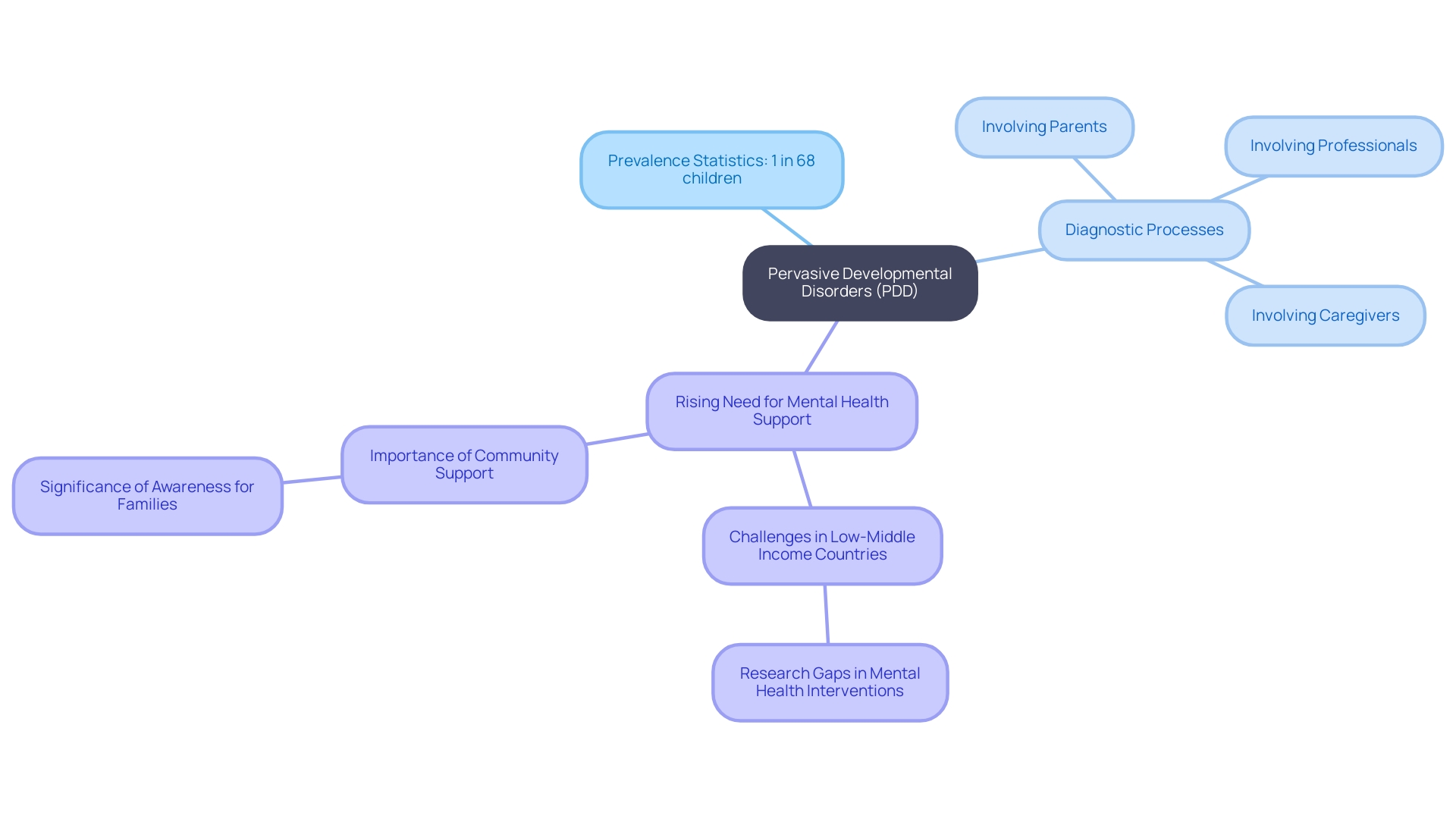
Recognizing the Symptoms of Pervasive Developmental Disorder
Recognizing the symptoms of Pervasive Developmental Disorder (PDD) at an early stage is crucial for implementing timely interventions that can significantly enhance the developmental trajectory for youth. Common indicators of PDD include difficulties in communication, which may manifest as delayed speech or challenges in understanding social cues, as well as difficulties with social interactions, leading to feelings of isolation. Additionally, repetitive behaviors, such as insistence on sameness or specific routines, are often observed.
Parents play an essential role in this early identification process. By closely monitoring their offspring's behavior and developmental milestones, they can document any concerns that arise. This proactive strategy not only empowers parents but also encourages meaningful conversations with healthcare professionals, ensuring that young individuals receive the attention and assistance they require.
Early recognition is vital as it paves the way for access to valuable support services. Studies show that the majority of young individuals with developmental challenges, including those with conditions such as Developmental Coordination Disorder (DCD), possess a formal identification that can inform their intervention strategies. For example, a national study discovered that 81.9% of youth with movement difficulties received a diagnosis, and 91.6% of guardians believed that this diagnosis was advantageous, despite many being unaware of the condition prior to diagnosis.
Furthermore, worries about the effect of motor challenges on social and emotional well-being are widespread, with 94.8% of caregivers expressing concern regarding their offspring's social interactions. Therefore, identifying these symptoms early not only aids in obtaining therapeutic interventions but also mitigates potential long-term challenges, fostering an environment where individuals can thrive socially and emotionally.
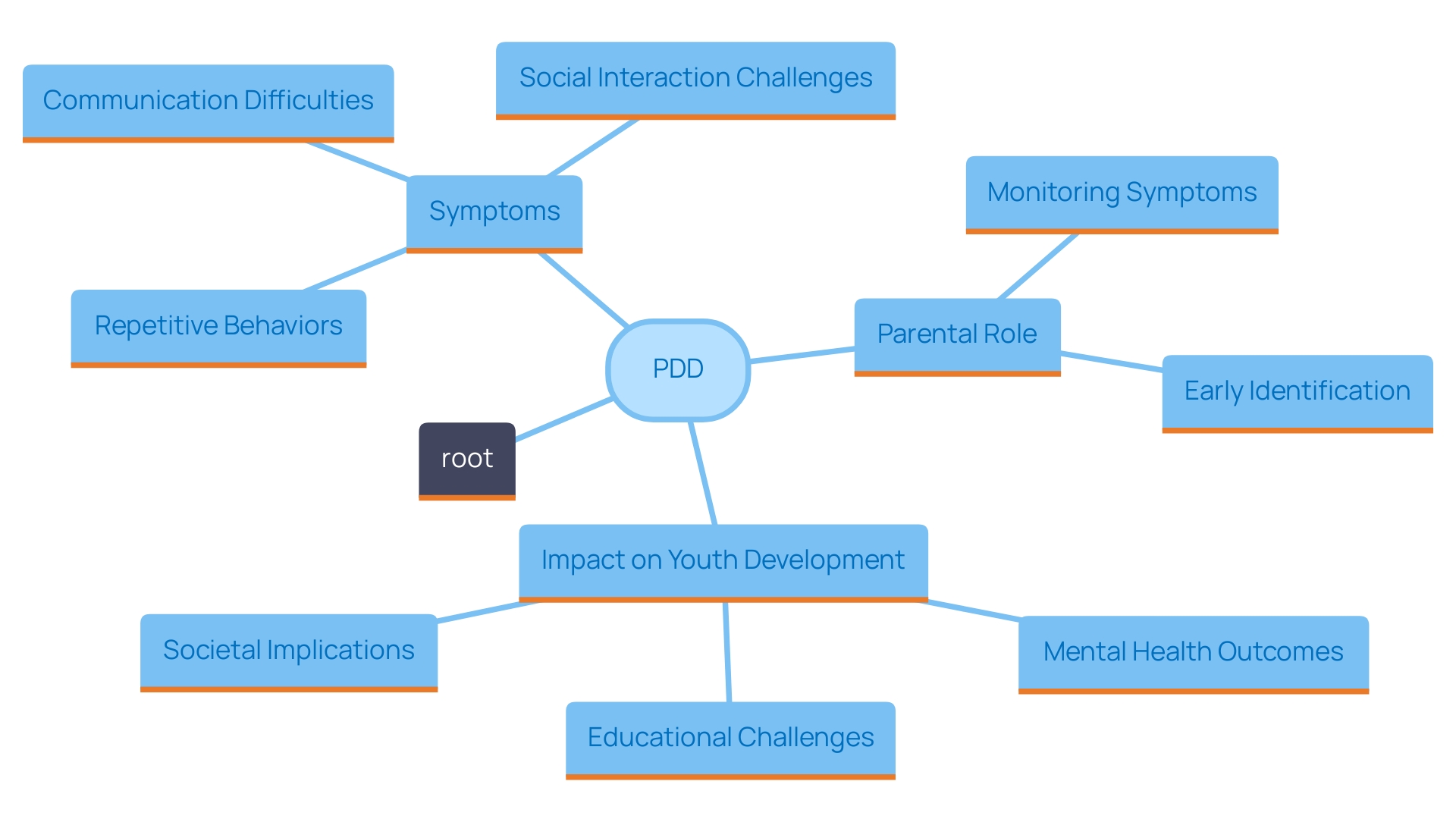
Understanding the Causes and Risk Factors of PDD
The precise origins of Pervasive Developmental Disorder (PDD) remain elusive, yet a combination of genetic, environmental, and neurobiological factors is thought to play a critical role in its emergence. Recent research has illuminated the significant influence of disrupted dopamine signaling on neurodevelopmental disorders, such as Autism Spectrum Disorder (ASD). In one groundbreaking study, researchers uncovered a link between developmental dopamine pathways and autism, suggesting that this neurotransmitter plays a more pivotal role in development than previously recognized. This underscores the significance of early awareness among caregivers regarding behavioral signs in their children, which may necessitate timely evaluations. Furthermore, the investigation into genetic variants has revealed that previously unlinked genes account for a substantial portion of recessive developmental disorders, with known genes explaining over 80% of cases. The diversity of contributions from these genetic factors varies across different ethnic groups, underscoring the complexity of PDD. As guardians engage in discussions with healthcare providers, sharing insights about family history and environmental exposures becomes paramount. This proactive approach not only enhances understanding of potential developmental risks but also encourages a collaborative effort in navigating the complexities of diagnosis and treatment. Equipped with this knowledge, parents can better advocate for their offspring's needs and seek the appropriate resources and support systems.
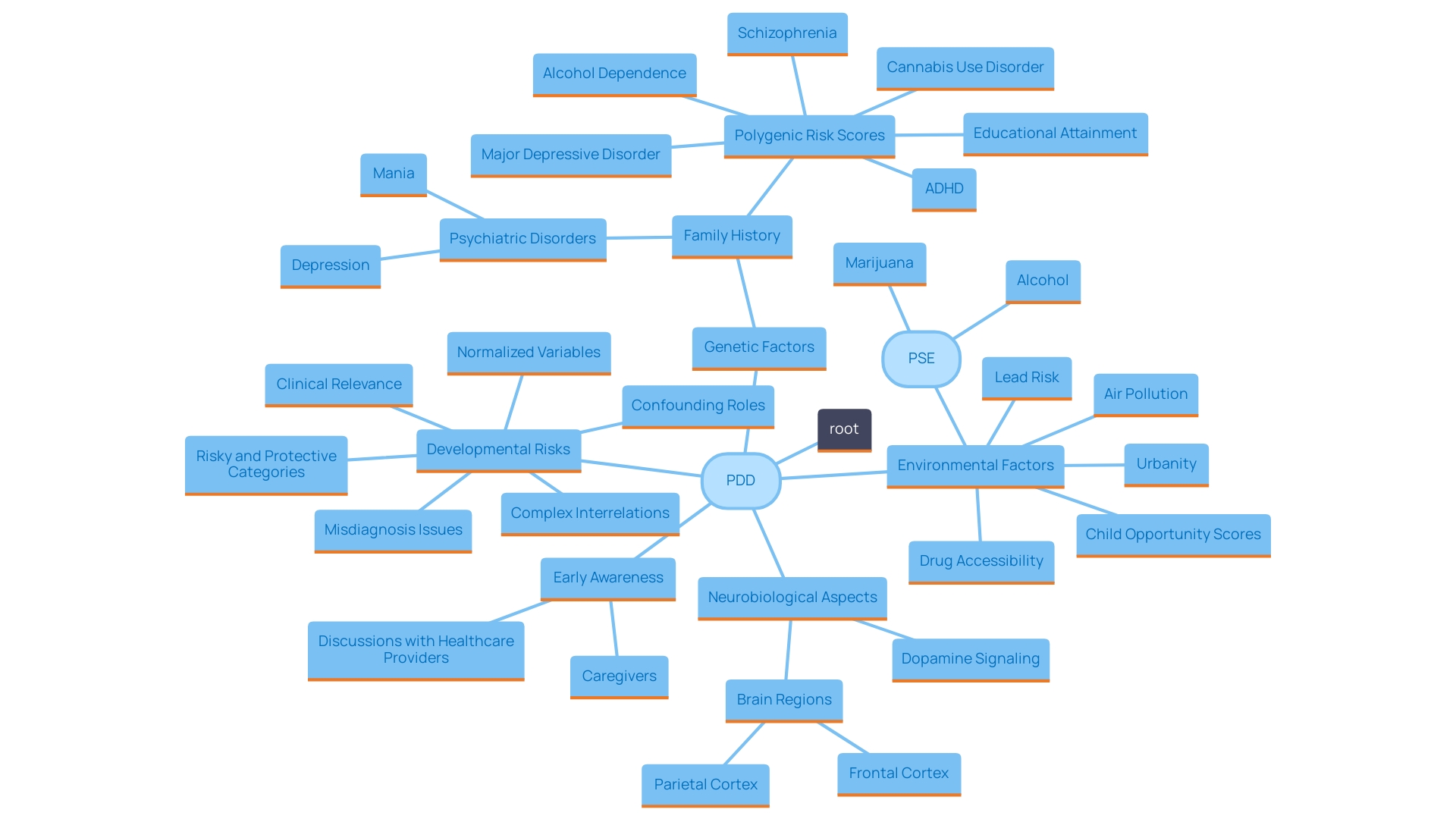
The Diagnostic Process for Pervasive Developmental Disorder
The diagnostic process for pervasive developmental disorders (PDD), including autism spectrum disorder (ASD), is multifaceted and typically requires comprehensive evaluations that delve into various aspects of an individual's development, behavior, and communication abilities. This process often encompasses standardized assessments, detailed interviews, and professional observations, all aimed at gathering a holistic view of the child's capabilities. It's crucial for guardians to comprehend this assessment journey, as it establishes clear expectations and prepares them for the essential steps toward securing a formal evaluation.
One key component of the diagnostic process is the reliance on two primary sources of information: the descriptions provided by guardians or caregivers and the observations made by professionals. The American Psychiatric Association's Diagnostic and Statistical Manual, Fifth Edition (DSM-5) lays out standardized criteria that guide clinicians in diagnosing ASD. It’s essential to recognize that although different tools are available to evaluate ASD in young individuals, no single assessment should exclusively determine a conclusion.
Research emphasizes the importance of early detection—studies show that guardians are often the first to observe signs of autism, yet they usually experience a prolonged wait, averaging 3.5 years, from the initial consultation with a healthcare provider to the final diagnosis. This delay highlights the necessity for guardians to be proactive in seeking evaluations, as early intervention can dramatically enhance outcomes for their offspring. Engaging parents in the evaluation process can also improve the chances of recognizing developmental delays and autism sooner, ultimately promoting better developmental assistance for the child.
Moreover, innovative initiatives are emerging to address the critical gaps in existing diagnostic methods. For instance, organizations are striving to develop tools that can identify ASD at the earliest possible age, thereby shortening the often lengthy diagnostic journey. Such advancements promise not only to enhance the accuracy of diagnoses but also to significantly improve the quality of life for affected families by facilitating timely access to tailored interventions and support resources.
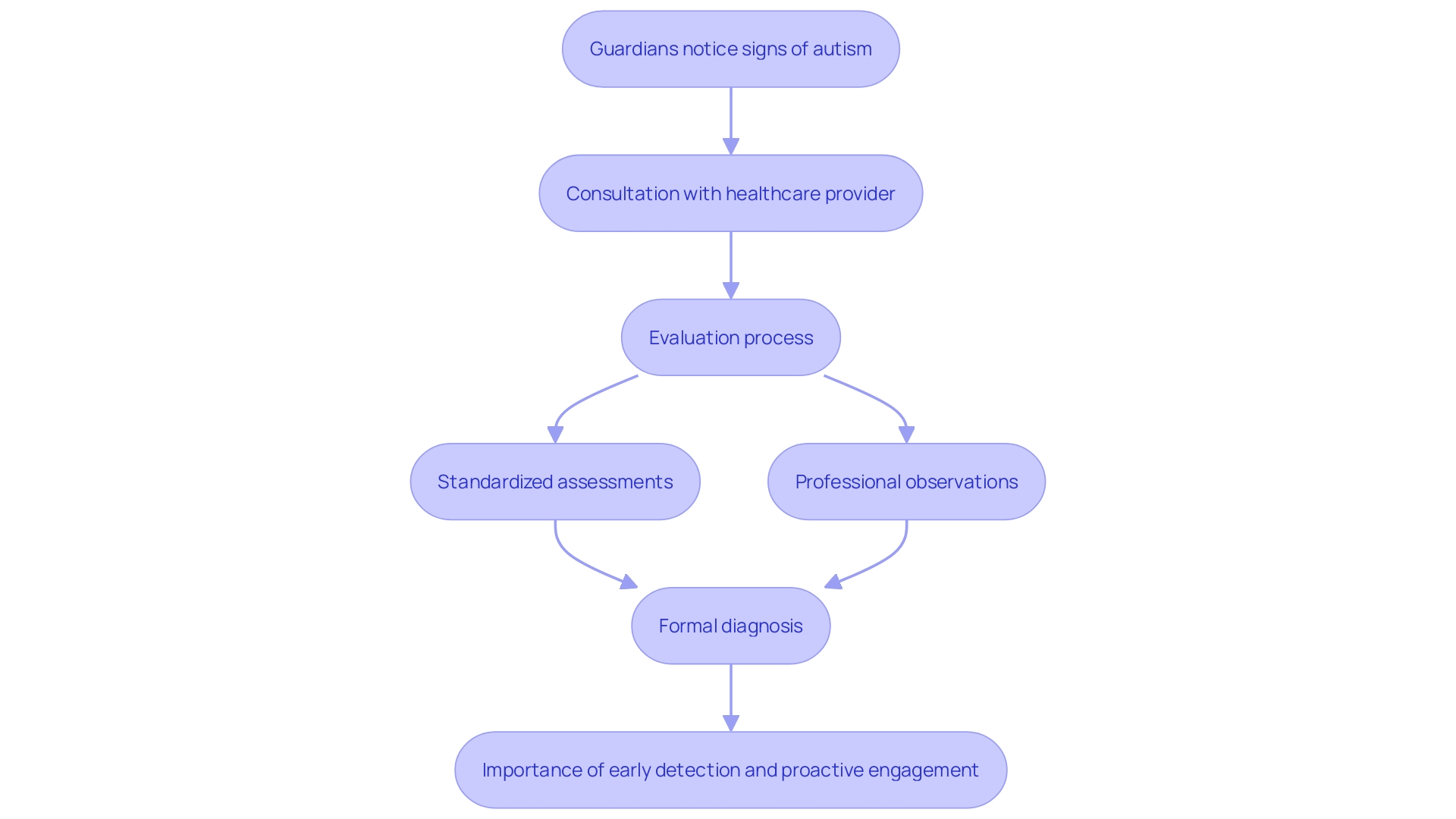
Conclusion
Navigating the landscape of Pervasive Developmental Disorders (PDD) is essential for parents and caregivers, as it empowers them to advocate effectively for their children. Understanding PDD—its definitions, symptoms, and the complexities of the diagnostic process—enables families to recognize early signs and seek timely interventions. With approximately 1 in 68 children diagnosed with a form of PDD, awareness is not just beneficial; it is critical in fostering a supportive community where families can find connection and solidarity.
The prevalence of these disorders emphasizes the importance of early identification and intervention. By being attuned to their child's behaviors and developmental milestones, parents can engage in meaningful discussions with healthcare professionals, ensuring that their children receive the support and resources they need. As research continues to unveil the multifactorial nature of PDD, including genetic and environmental influences, parents are encouraged to share relevant information with their healthcare providers to facilitate comprehensive evaluations.
The journey through the diagnostic process may seem daunting, but understanding its components can alleviate some of the stress. By remaining proactive and informed, parents can navigate the complexities of diagnosis and treatment effectively. With the emergence of new tools and initiatives aimed at early detection, the path toward better outcomes is becoming increasingly accessible.
Ultimately, by fostering awareness and understanding of PDD, families can advocate for their children’s needs, paving the way for improved social and emotional health outcomes that allow every child to thrive.




